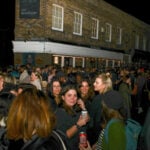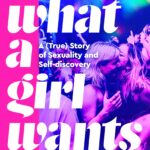The London Dyke Market made its much-anticipated return to Kennington last Saturday, drawing in a line of lesbians and allies so long it could have rivalled the queue for a Clairo gig, curling all the way around the block to gallery Space Station Sixty-Five.
Organised and curated by South London-based artist Emily Witham, the annual community showcase first launched last summer to overwhelming demand, with thousands turning up for its inaugural edition. This year felt even bigger: more stalls, more energy, and, crucially, more lesbians stamping on impulsive flash tattoos and swapping IGs over Caribbean patties while browsing sapphic ceramics, raunchy prints, and handmade jewellery.
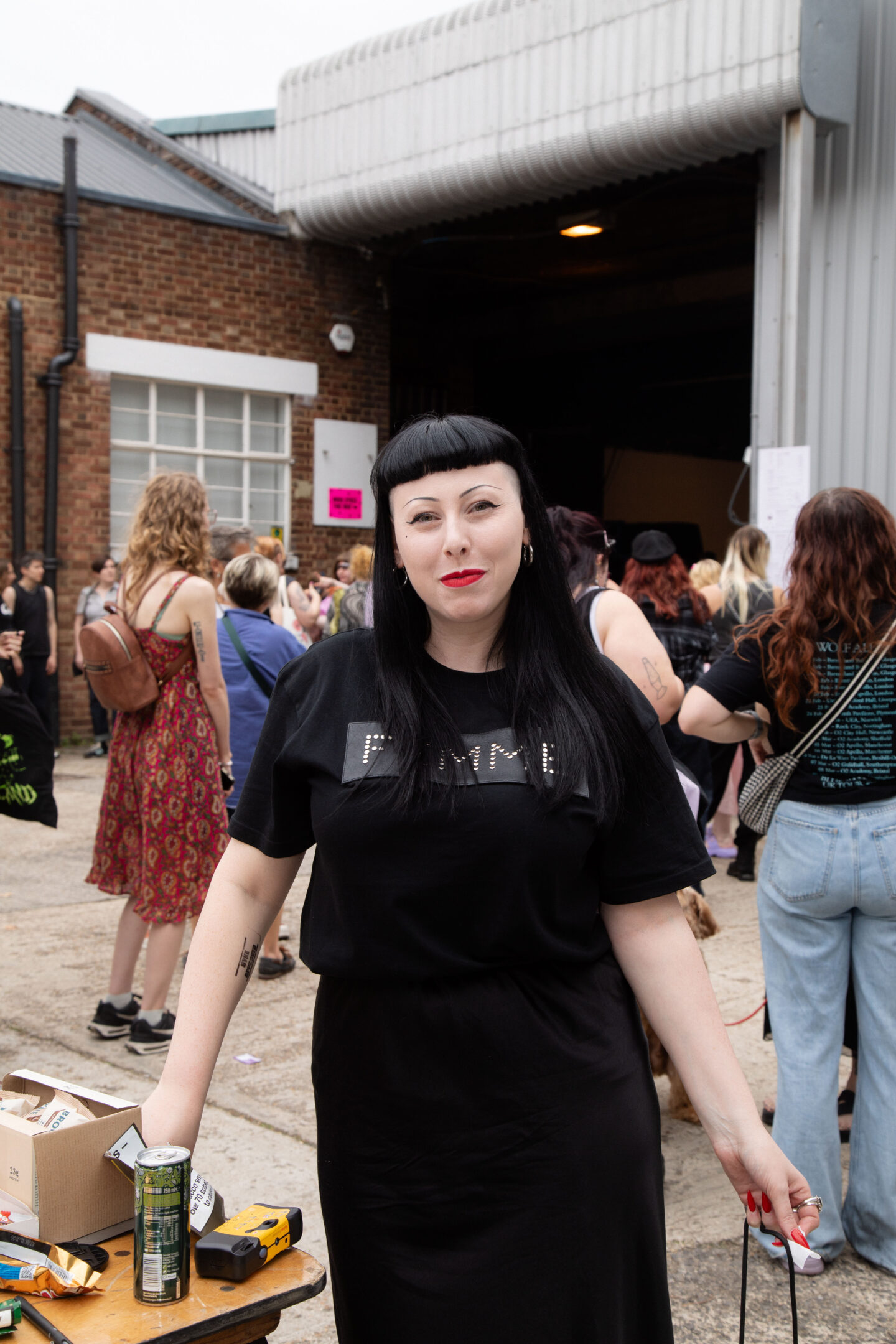
“It is a privilege for me to curate The London Dyke Market and to play a small part in creating lesbian futures for ourselves and our community by showing any young dykes attending that there is an alternative universe out there full of people just like you,” said Witham.
Whether you wanted to buy a book on queer activism and a latex corset, craft your sustainable personalised strap harness out of leather scraps, or awkwardly run into your ex, the market had all eager attendees covered. Over fifty dyke artists, writers, and makers transformed the space into something between a sapphic summer fête and a queer creative utopia, with stalls spanning from dyke fashion designers and sculptors to sex toy makers, poets, tattooists, and even a roller-skating performance artist.
Read More: The Ultimate Queer Guide to Visiting Stockholm
Article continues below.
The sheer range of vendors turned the market into a living archive of contemporary lesbian culture – part craft fair, part political and economic protest, part flirtation zone – where you could snag a zine on queer history or get a fresh buzzcut from a dyke barber.
“Being a dyke is a really important, positive, and strong identity,” points out alternative leather fetish designer Feodora of Jed Phoenix of London. “It’s not just about your gender or your attraction to other people; it’s a political way of existing within a community and relating to the world.”
The power of gay women and gender non-conforming individuals investing in each other and seeing themselves reflected as part of a proud, loud, and strong community was at the forefront of the event, fostering an intersectional and inclusive environment built on mutual support, kindness, and queer euphoria.
“I am so thankful for the wonderful opportunity to show, sell and celebrate our work,” said artist Gem Canniegieter-Savage.
“It has become so much more than a one-off event; it is a community that supports each other throughout the year. For me, as a Black Queer Butch, this space allows me to proudly showcase my designs that represent me, my heritage, my gender and my sexuality to others who see themselves in the details of what I do.”
That sense of community was echoed throughout the day, underscoring the market’s mission to reclaim the word dyke as one of pride and power. “It encompasses life, economy, acceptance, and our place in the world,” said artist and community organiser Stav B. “We work, we create, we look great, we’ve always been here, and we’re not going anywhere.”
For others, the reclamation was just as much about personal empowerment as it was about collective history. Painter and illustrator Ashton Attz put it simply: “I find it’s really important to take the power back and celebrate yourself. Turning something that may have been used in a negative sense in the past, and changing how it makes you feel and actually letting it make you feel powerful, celebrated, and bold.”
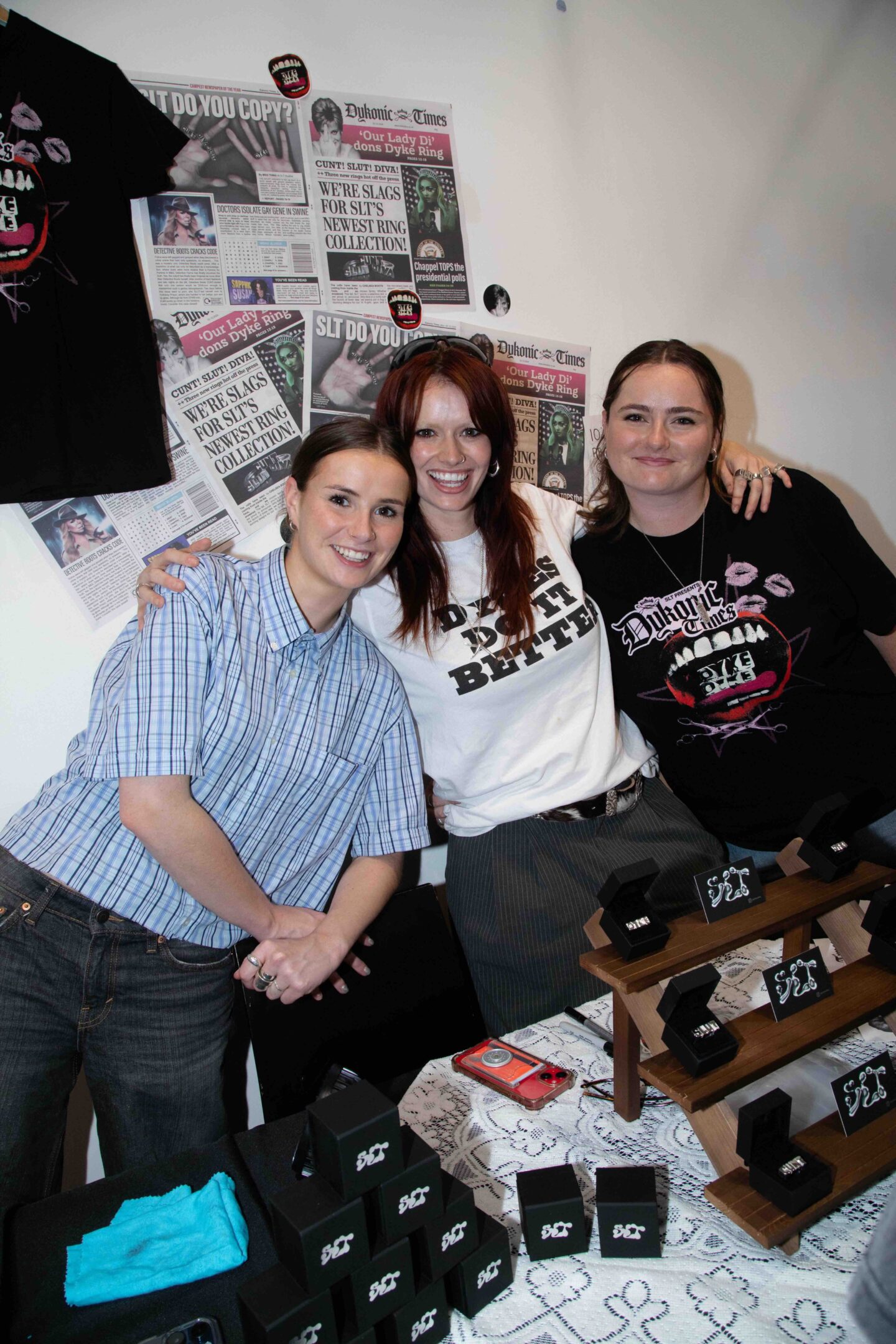
Read below as we chat to Witham about the vision behind the market, its reclamation of the word ‘dyke,’ and what lesbian joy looks like in 2025.
What first sparked the idea for the London Dyke Market, and why now?
I launched The London Dyke Market as I was frustrated with the lack of spaces for dykes to showcase their work. My friends and members of my community around me were producing art, writing books, and creating remarkable things about contemporary lesbian culture, yet there were limited opportunities, beyond online platforms, to present these works to the very audiences they represented.
I wanted to create a space for dykes, by dykes, whereby people can purchase the work directly from the maker and put money back into the pockets of the community, far away from corporate sponsorships and unethical rainbow-adorned brand partnerships. Let’s start our own dykeconomy!
There is a legacy of great creativity and a ‘Do It Yourself’ attitude within UK lesbian culture. I’m deeply inspired by that history: by the women from Greenham Common, by the lesbian campaigners who abseiled into the House of Lords, and by those who chained themselves to the desks of the BBC Six O’Clock newsreaders live on air in 1988. That kind of bold, imaginative action has always been part of how our community has survived.
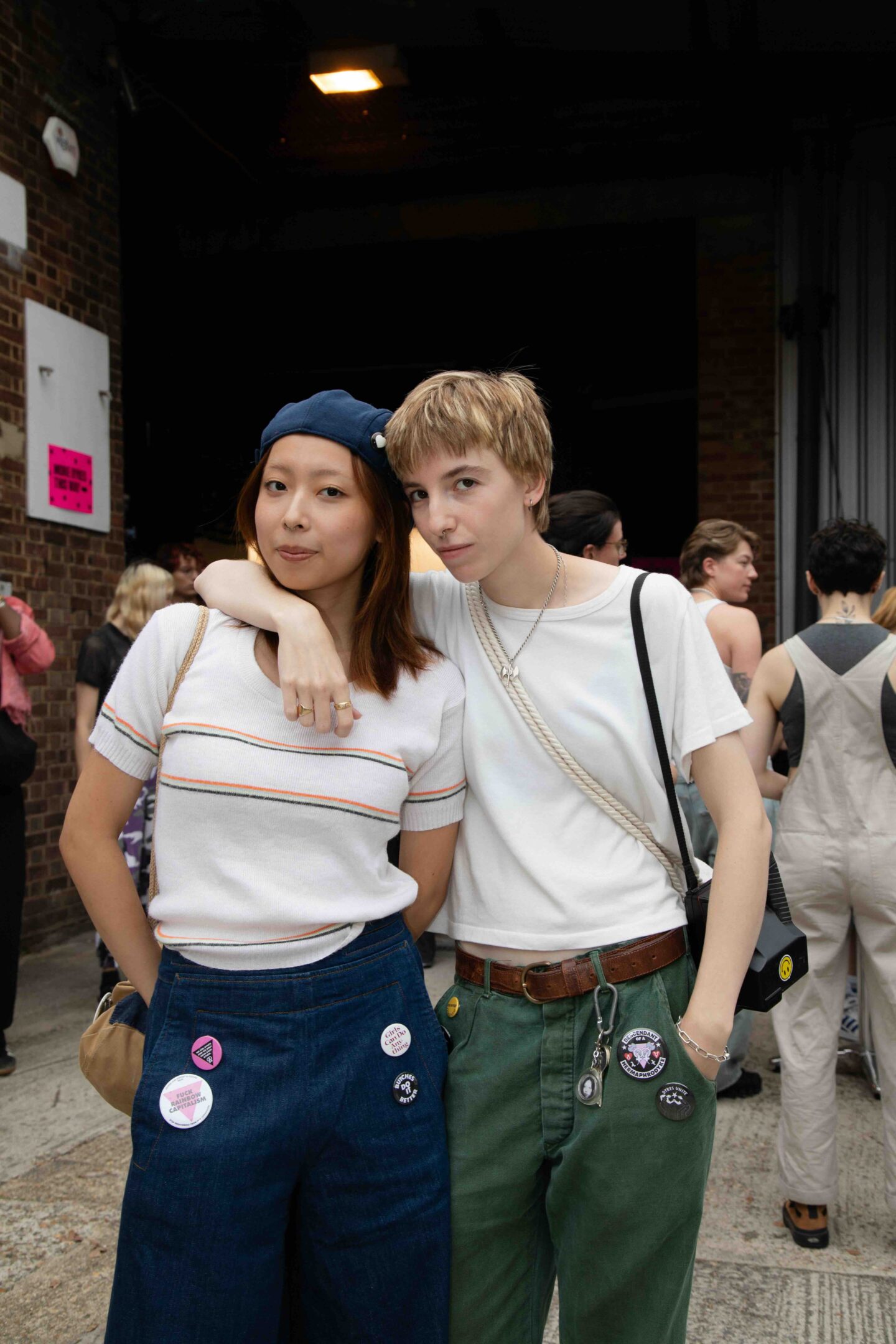
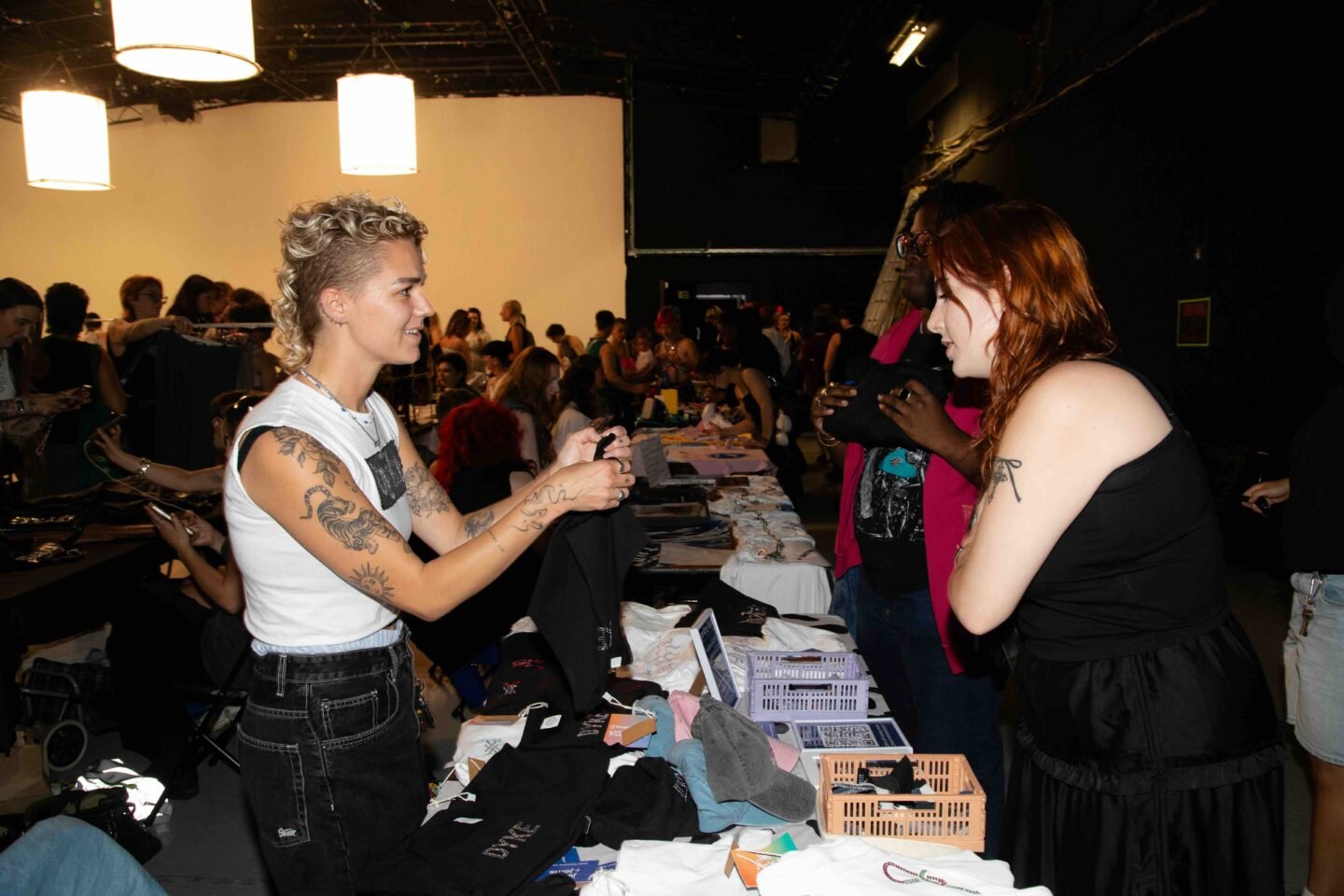
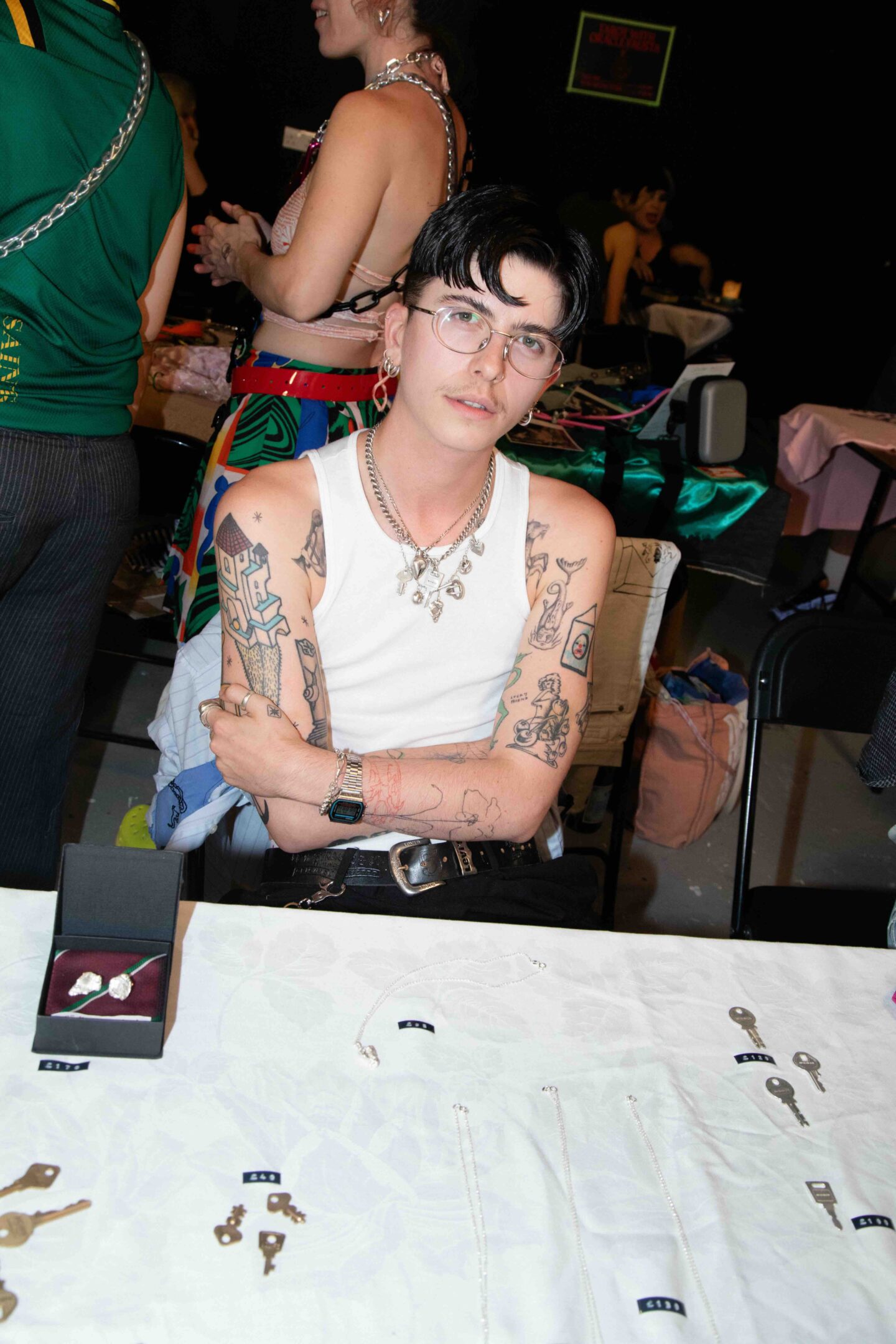
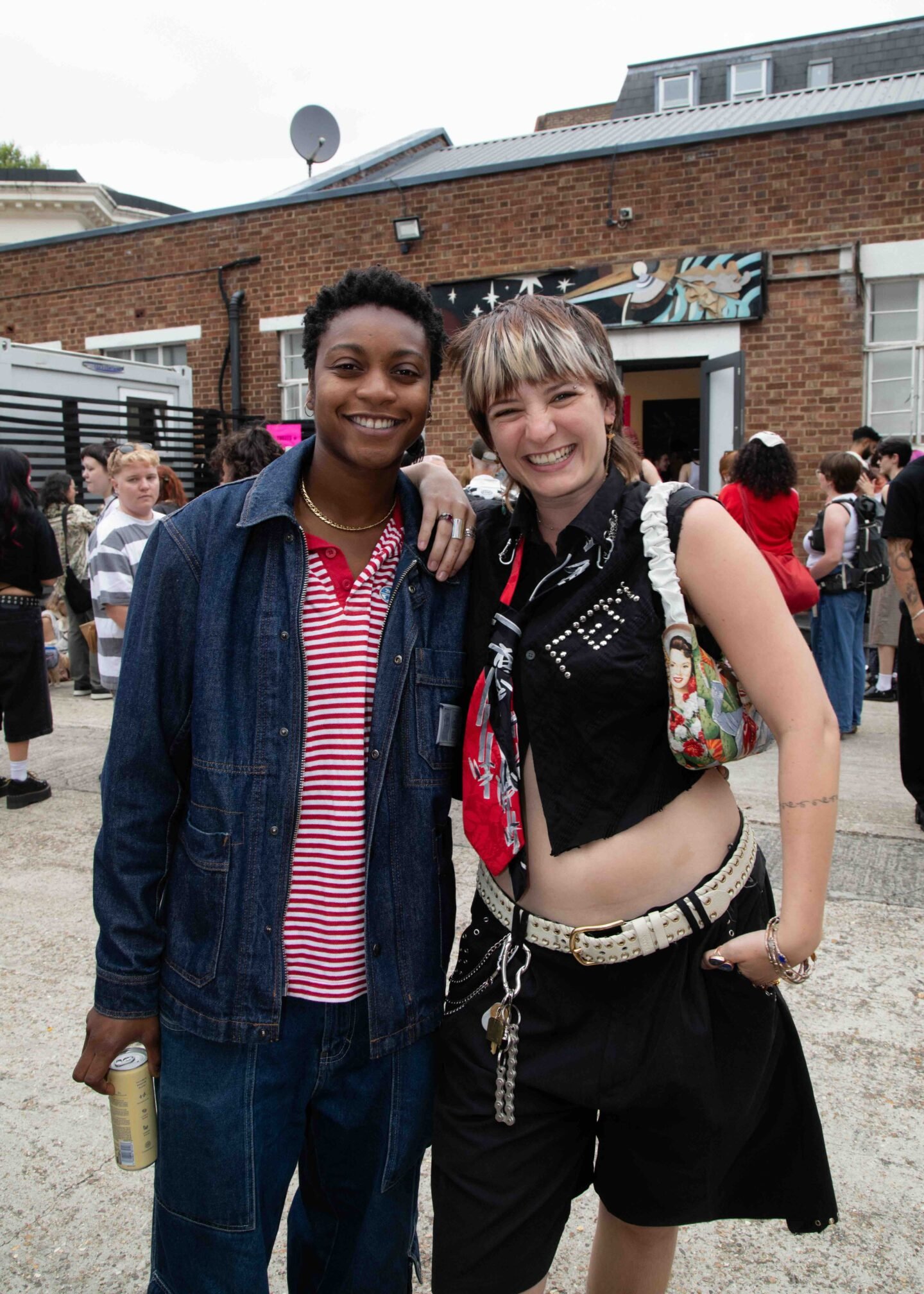

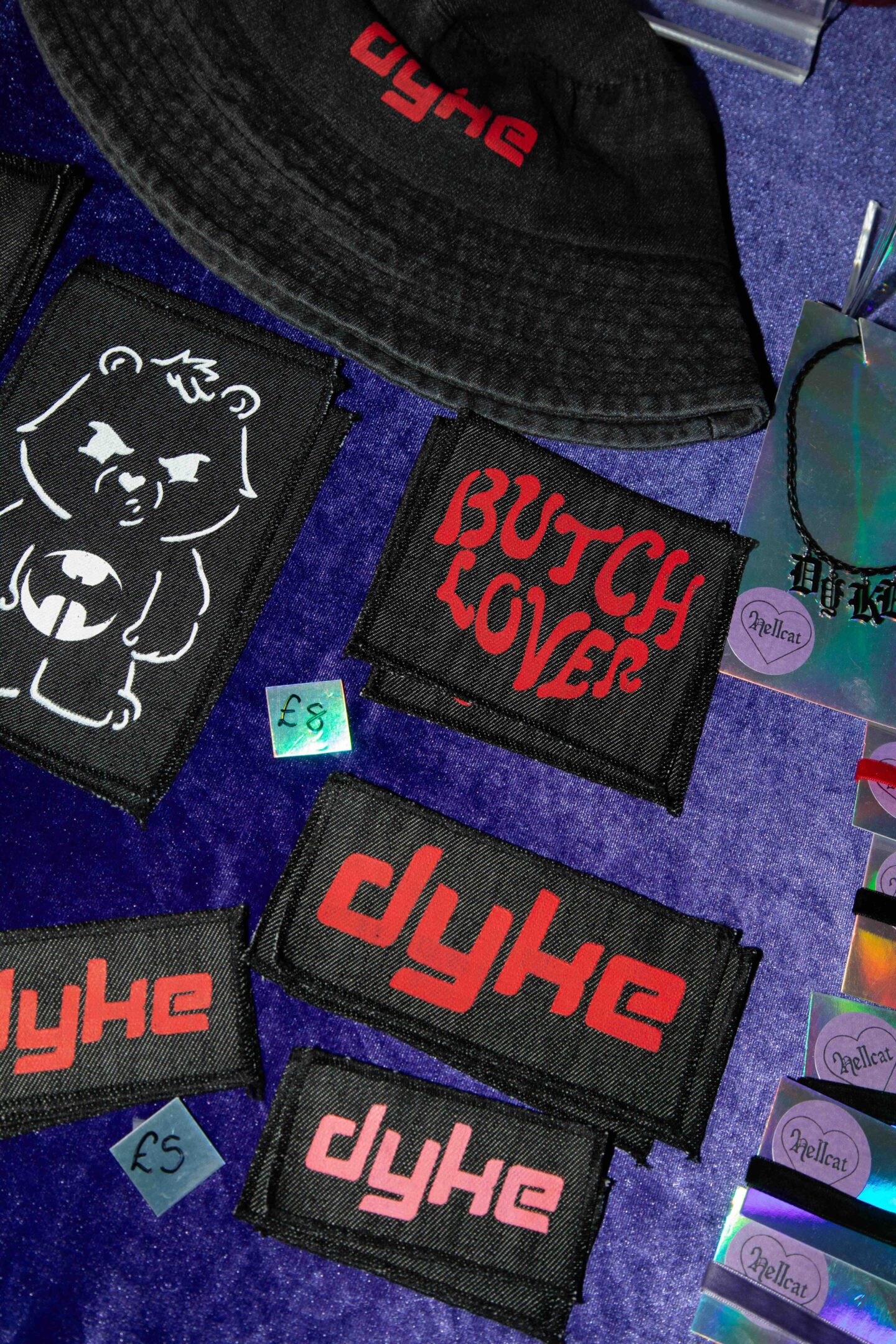
Photos by Cherry Au
More personally, I’m influenced by everyone featured in the Rebel Dykes documentary, the punks, bikers, clubbers, squatters, protestors, kinksters and gender outlaws, many of whom I’m now lucky enough to call my friends. In 2021, I made a leather protest banner appliquéd with the phrase “Descendant of a Rebel Dyke” as an ode to this generation and everything they’ve passed on.
That phrase isn’t just symbolic; I really do feel like I come from a lineage of provocative, self-sufficient queer women who’ve taught me that if you want something to exist, you have to build it yourself. No one else is going to do it for you. That’s the spirit that shaped the market: a space celebrating lesbian creativity, culture and community, because ultimately, we are dykes and we only have each other.
How do you go about curating the line-up of creators, and what are you looking for in vendors?
This event is perhaps unusual in that there’s no open call; instead, it’s a carefully curated selection of artists, writers, and makers. The shortlisting process is run less like a traditional market and more like an exhibition. I have experience in curation and, after graduating, worked as an art buyer for a number of years, so I draw on that background to find participants.
I’m looking for a few key things. First, I want a diversity of mediums, practices and price points. This year’s line-up included dyke fashion designers, sex toy makers, barbers, archivists, activists, poets, artists, leather workers, chefs, writers, ceramicists, jewellers, photographers, tattooists, and even a roller-skating performance artist. But just as important is a diversity of experiences. I put a lot of research into who is involved and try to ensure the event reflects and showcases a broad spectrum of dyke identities and perspectives. And not just those from London, dykes from all over the UK travel to partake in this event.
The market proudly uses the word dyke in its name. Can you talk about the importance of reclaiming that word in 2025?
The word dyke is a word of specificity; there is no ambiguity in its meaning. We all know what it means, its history and its connotations. By using this word, dyke, we can find each other. It’s an important reclamation: taking back something that was once venomously used against us and now turning it into something beautiful and celebratory, to be used by and for us. No longer a mark of shame but a symbol of strength. I think that’s what queer people, and lesbians in particular, have always been good at.
Were there any moments at the market that made you stop and think, “Yes! This is exactly why I wanted to do this?”
Yes, so many! A moment that really stayed with me was at the end of last year’s event when one of the stallholders came up to me with tears in her eyes, saying she’d made enough money that day to pay off two months’ rent that she owed. That felt huge.
It’s a pretty astonishing example of the real material impact of dykes buying directly from other dykes and not from corporations. Every single purchase, even a badge costing £1, contributed to someone in our community and, on this occasion, kept them housed. I found it remarkable. That kind of solidarity and mutual support is exactly why this event matters.
For you personally, what does lesbian joy look like in 2025?
It looks like what I saw last Saturday: butches, femmes, studs, trans people and other gender outlaws of all ages and backgrounds coming together. Exchanging conversations, ideas, glances, and phone numbers. I heard it mentioned (more than once) that it was one big dyke cruising ground!
I am thankful for our online spaces that exist in 2025, but I think something special happens when dyke bodies are all together physically in the same room. We speak the same language as each other. That’s what lesbian joy looks like to me.
What does the market aim to offer the dyke and wider queer community that might be missing elsewhere?
I’m delighted that there are increasingly more queer/dyke meeting spaces popping up, but the aim for The London Dyke Market is not solely about meeting but also about elevating our art, writing and creative outputs.
I want people to feel proud of being a dyke. I want to show that we have our own vibrant culture, community and history. I wouldn’t have known this myself if, when I was coming out, I hadn’t seen the works of great artists such as Sadie Lee, Sarah-Jane Moon, Del La Grace Volcano and Catherine Opie. Back then, I didn’t have access to the huge community that I do now, but I knew that people like me existed because I saw them in their paintings and photographs.
Unlike heterosexuals, we don’t learn about our heritage from our family; we have to go out and find it for ourselves. So it feels increasingly necessary to create work that is unapologetically about lesbians, to show the younger generation that this great, innovative dyke counterculture still exists. We are here, we are creating work right now!
It is a privilege for me to curate The London Dyke Market and to play a small part in creating lesbian futures for ourselves and our community by showing any young dykes attending that there is an alternative universe out there full of people just like you.
What’s your vision for the market five years from now?
Bigger, better, dyke-ier! This year, its second year running, we expanded in size, doubling the venue and taking over Space Station Sixty-Five gallery as well as the adjoining Kennington Film Studios. Which in turn meant that we could double the number of participants involved. With this also came a surprising increase in visitors. In fact, we broke last year’s record and had over 2,300 guests.
It’s been suggested that next year we might have to hire a local football stadium to accommodate all the dykes!
Nonchalant x




